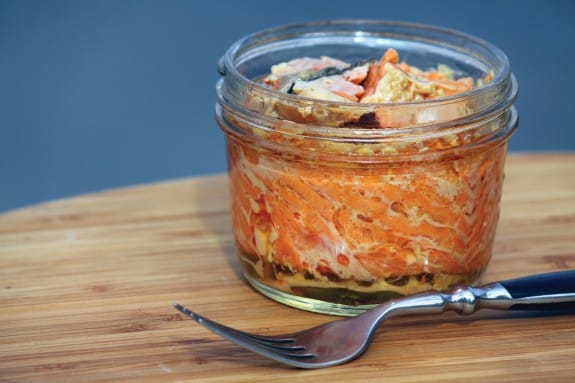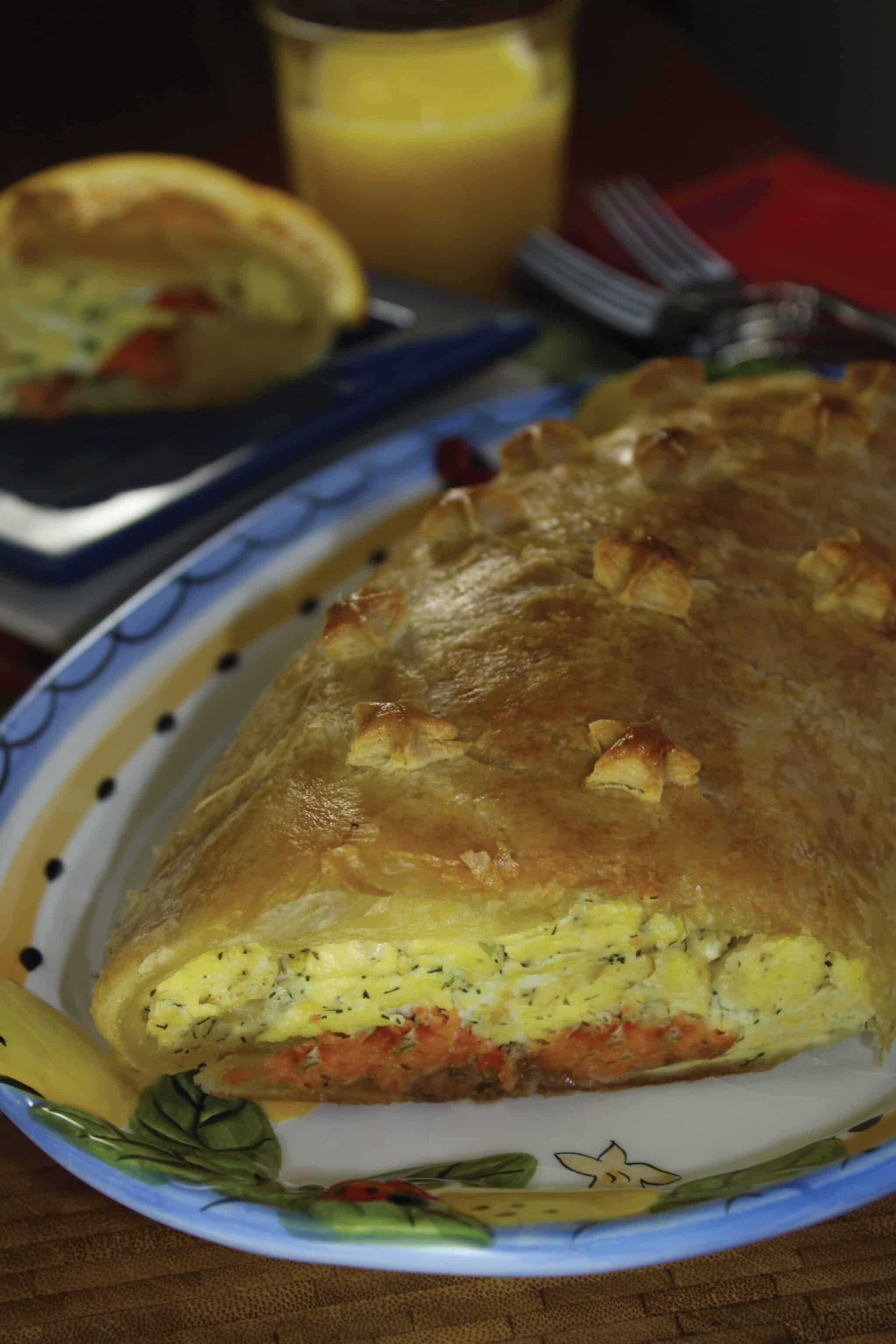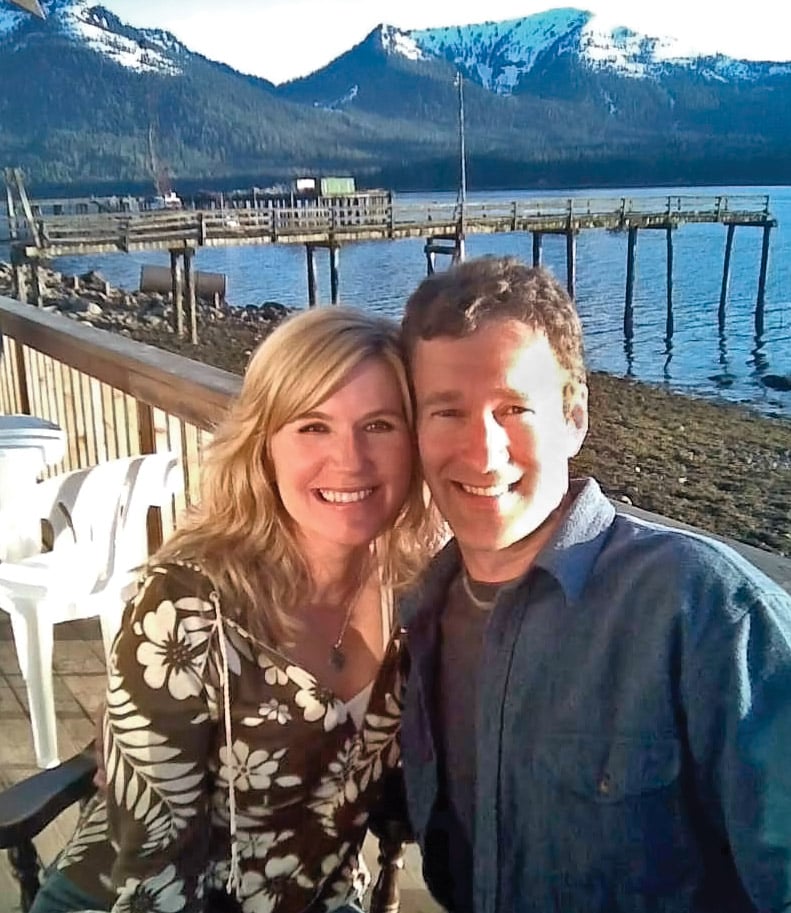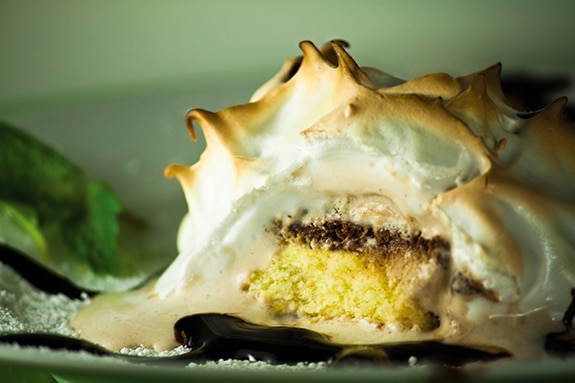I absolutely love eating pot stickers. What’s not to love about them? Crispy on one side, tender on the other and bursting with a flavorful crab, shrimp and pork filling. These are simple to assemble and sheer gold sitting in your freezer! The uncooked pot stickers can be placed on a parchment-lined tray (make sure they’re not touching) and frozen. Transfer to a plastic freezer bag and store for up to a month. To cook the frozen pot stickers, add an extra minute to the cooking time after the water is added. Continue Reading →
Crab, Shrimp and Pork Pot Stickers
This recipe is from My Tiny Alaskan Oven
by LaDonna Rose on November 16, 2020 in Appetizers, My Tiny Alaskan Oven, Recipes

Roasted Shrimp with Rosemary and Thyme
This recipe is from My Tiny Alaskan Oven
by LaDonna Rose on October 11, 2018 in Appetizers, Entrées, My Tiny Alaskan Oven, Recipes

This Roasted Shrimp with Rosemary and Thyme is the perfect recipe for shrimp. Roasting them with fresh rosemary and thyme adds so much flavor. I am positive you will love this recipe and will never serve shrimp other than this way again. Continue Reading →
Honey-Garlic Shrimp
This recipe is from My Tiny Alaskan Oven
by LaDonna Rose on September 25, 2017 in Entrées, My Tiny Alaskan Oven, Recipes

Nothing beats the clock like stir fry cooking. If you plan on serving this Honey-Garlic Shrimp with rice, start the rice first. While it’s cooking, cut up the vegetables and make the stir fry. Continue Reading →
Seafood Freshness
by LaDonna Rose on June 27, 2012 in Tips and Tricks
WHILE TOP CHEFS INSIST ON USING FISH THE SAME DAY IT’S PURCHASED, that standard is sometimes unrealistic for mere mortals without a daily fishing boat service.
A good rule of thumb for the rest of us: Keep offerings from the ocean for no more than three days refrigerated.
They key to keeping seafood fresh is to buy it at the end of your shopping trip, so you can get it home quickly. Then put it in the coolest part of your fridge. If you’re really zealous, store it in a pan of crushed ice (put waxed paper between the fish and the ice). Some experts even advise giving the fish a rinse in salty water if you’ll be storing it for more than a day.
The more intact the fish, the fresher it will stay, so if you can find whole fish and are up for the deboning challenge, you’re better off buying that than precut. Larger fish, such as tuna and salmon, keep better than small fish, even if they are cut into steaks. Shrimp, scallops and crab deteriorate the fastest of all. The chefs are right on the money, don’t plan on keeping these for more than a day.
7 Reasons To Ask For Alaska Seafood
by LaDonna Rose on April 25, 2012 in 7 Reasons to ask for Alaska Seafood
WILD – Alaska seafood is wild caught! There is no finfish farming allowed in Alaska. The seafood is harvested in the wild, in the pristine waters off Alaska’s rugged 34,000 mile coastline.
NATURAL – Alaska Seafood is seafood at its natural best. Alaska boasts five species of salmon, shrimp, scallops, crab, and whitefish varieties that include pollock, halibut, Pacific cod, black cod, sole, and rockfish. They mature at a natural pace, swimming freely in the icy cold waters and eating a natural diet of marine organisms.
SUSTAINABLE – Alaska’s seafood is eco-friendly. Alaska’s abundant seafood species are part of healthy, intact ecosystems, and the fisheries are managed for sustainability. Ever since statehood in 1959, Alaska’s fisheries have been managed with the long term health of the stocks as top priority. This is mandated by the Constitution of the State of Alaska. Alaska’s healthy marine environment and sustainable fisheries management are a model for the world.
FLAVOR – The superior flavor and texture of Alaska seafood is prized around the world. They get their flavor and flesh color from their natural diet of marine organisms: in the case of salmon this includes krill and tiny crustaceans. Salmon migrate thousands of miles over the course of their lifetime, and all that exercise in cold water gives the fish a firm texture. Each of the five species – pink, keta, sockeye, coho, and king – has its own characteristics of color and flavor.
VERSATILE – Alaska seafood is easy to prepare. You can grill, poach, bake, sauté, and even take portions right from the freezer for cooking, putting a meal on the table in minutes.
HEALTHY – Alaska seafood is healthy and nutritious. It is high in protein, and low in saturated fat, and a natural source of the “good fats” – heart-healthy omega-3s.
U.S. JOBS for a HEALTHY ECONOMY – Over half the seafood harvested by American fishing families is harvested in the waters off Alaska. Although many of the families fish from small vessels, and the seafood is usually processed in small communities, the Alaska seafood industry is a major economic engine: it is Alaska’s largest private sector employer, providing work for 54,000 people, and worth an estimated $5.8 billion to Alaska in direct and induced economic output.
Please visit www.alaskaseafood.org for more interesting and important nutritional information, recipes and to learn more about Alaska seafood.
Youthful Skin–Naturally with wild Alaskan salmon
by LaDonna Rose on April 4, 2012 in Youthful Skin--Naturally with wild Alaskan salmon

According to Dr. Nicholas Perricone “There is a little beauty secret that is worth it’s weight in gold. If women understood that eating a simple inexpensive small can of salmon would give them radiant skin, with softness like nothing else in this world, salmon would fly off of the supermarket shelves”.
You would see a stampede toward the fish isle.
Sounds like a fantasy? I assure you it is very real…
Why salmon makes you youthful
Salmon is one of the best-known sources of skin-beautifying Omega fatty acids. Salmon reduces inflammation more effectively than any other food. It enhances radiance, reduces wrinkles and puffiness. Salmon is a beauty food because it’s nutrients play a key role in keeping the skin’s outer layer soft and smooth. The Omega-3s in salmon reduce inflammation on the cellular level that can cause redness, wrinkles, and loss of firmness.
Ever wonder what salmon, shrimp and lobster have in common? Their brilliant red color is a result of Astaxanthin, the multi-talented antioxidant. Astaxanthin is the super star in the realm of anti-aging. What it does is protects the cells from the most damaging forms of free radicals-improves skin elasticity and reduces the appearance of fine lines. Astaxanthin is available as a nutritional supplement and worth looking into.
There’s another super star substance found in wild Alaskan salmon and that is DMAE. DMAE is a known cognitive enhancer–that is, that it can improve memory and problem-solving ability. It does so because it improves nerve function. DMAE when eaten in larger amounts, can increase muscle tone and therefore decrease the appearance of sagging. As a side note, DMAE can be placed into a lotion form and applied topically to help decrease sagging and increase muscle tone.
According to the Perricone Diet, our skin can get immediate benefits by following what he calls a nutritional facelift for three days. The foundation of this diet is wild salmon, eaten twice a day with blueberries, cranberries, raspberries and strawberries. The Wrinkle Cure by Dr. Nicholas Perricone is worth the read.
Here’s five ideas to incorporate wild Alaskan salmon into your diet.

1. Shop for wild Alaskan salmon when it’s in season. You’ll feel good knowing that you are not only getting the freshest salmon available, but you are also supporting a commercial fishing family.

2. Prepare your salmon simply. Try using Olive oil and Lemon pepper for a tasty glaze without added fat.

3. Eat it for breakfast. You wouldn’t think of eating salmon in the morning with a bagel and fresh blueberries, but it works!

4. Make eating salmon a healthy social event. Make a date to go to the Fishermen’s Market, or bring out the BBQ for a potluck dinner.

5. Get creative. You could put in your eggs in the morning, toss it in your salad at lunchtime, make it into a sandwich, put it on your pasta, broiled as a burger, baked in the oven, or thrown on the grill.

There are so many different things you can do with salmon that it becomes far easier to make it part of your normal diet. When I tell people I eat salmon 5 times a week sometimes twice a day, the response is “Why so much?” Because eating wild Alaskan salmon one or two times a day, will do more for your skin than any other anti-aging remedy that I know of.
While I can’t promise you can turn back time, the anti-inflammatory benefits of foods such as salmon, will gaurantee that you can greatly slow down it’s negative effects. These include good health, ample energy, increased sense of well-being and radiant, glowing skin.
In other words, there are many health benefits to be had from eating wild Alaskan salmon.
Know of any other foods that are great for the skin? I’d love to know what they are.
Best Fishes! LaDonna Rose

About LaDonna
I’m LaDonna Rose Gundersen, Alaskan fisherwoman, cookbook author and lover of salmon. The recipes and tales I share are inspired by life aboard the LaDonna Rose – the fishing boat my husband Ole and I operate together out of Ketchikan, Alaska. Read more... Follow me Facebook
Follow me Facebook
 Follow me Instagram
Follow me Instagram
 Follow me Pinterest
Follow me Pinterest









